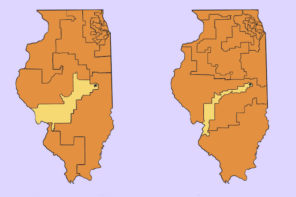Last Monday, the 23rd of January, the Egyptian People’s Assembly convened the first gathering of a freely elected representative government in a post-Mubarak world. This historic moment took place just two days before the first anniversary of the protest movement that made such an assembly possible. Yet during the course of that year, reporters in American and European news outlets have struggled to come to grips with events in the rapidly changing Middle East that, in many ways, have defied conventional stereotypes of politics and culture in the Arab World.
David Kirkpatrick’s piece in the New York Times, “Chaotic Start to Egypt’s First Democratically Elected Parliament,” emphasized the “bedlam,” “yelling,” and “chaos” of the proceedings, while much of the British press characterized the election as an “Islamist” victory. A Telegraph piece evoked a tone of apprehension at “the rise of the Islamists,” noting cryptically that it “has alarmed liberal Egyptians and Western governments.” Reports of this kind are driven by a sense of fear and a desire to control the disorder, revealing a fundamental misunderstanding of the significance of what has come to be known as “the Arab Spring.”
Beyond Radical Islam vs. Secularism
Many in the West, and even specialists of Middle East history and politics, have still not recognized the sheer magnitude of what has transpired in the past year. In this short time, no less than three decades-long authoritarian dictatorships have been overthrown: two by social movements that mobilized hundreds of thousands if not millions of peaceful protesters (Tunisia and Egypt), and one by revolutionary military engagement (Libya). Massive peaceful protest movements in Morocco, Jordan, and Saudi Arabia have led to important legal and constitutional reforms creating space for a greater share of freedoms in the Arab kingdoms of the Middle East.
The regional political atmosphere has been reshaped. The Arab League has suspended Syria’s membership; the King of Jordan has called for the resignation of Bashar al-Assad; the growing influence of Turkey in the regional politics has become evident; Tawakkul Karman, a Yemeni political activist was awarded the Nobel Peace Prize for her efforts to bring about democratic reforms in Yemen in the face of violent state repression; and there’s even been a strong ripple effect on the Palestine-Israel issue, the most volatile in the Middle East. The Palestinian Authority recently requested that the United Nations recognize the statehood of an independent Palestine, a political move that has further demonstrated the United States and Israel’s isolation from the rest of the world on this issue.
In spite of the new dynamics of Middle East politics there still remain places like Yemen, Bahrain, and Syria where longstanding dictators have clung to power and utilized brutally repressive measures, intimidation, arrest, and killing to suppress individuals from organizing against the government. Nevertheless, given all that has changed, these events should, without a doubt, be seen as the most significant global political transformation since the breakup of the Soviet Union and the fall of the Berlin Wall.
As extraordinary as these events have been, and the swiftness with which they have taken place, the conditions for the current revolutions had long been set: income inequality, unemployment, inflation, state repression, and changing demographics in a youth boom. The question was not if, it was when. Now that it has happened, one of the major questions being raised—with anxiety in some quarters and great excitement in others—is what role will religion play in the rapidly transforming Middle East? This is a thorny question, primarily due to the Western media which has cast a narrative that’s more reflective of the fears of countries like the United States and Britain than the realities on the ground in places like Egypt and Tunisia.
Still, amidst all the prognostications in American and European political punditry, really only two diametrically opposed views can be heard; both of which have little merit. One predicts the rise of a radical Islam that will engulf the Middle East and pose a grave threat to democracy and the West. The second envisions the emergence of democratic secular forces that will reject Islam and join the global community of nations in freedom.
Both derive from basic misconceptions about the workings of politics in the Middle East. They rely on the assumption that the Arab situation is unique, and that Arabs are inherently incapable of democracy. Because of their inability to create democracy, goes the conventional wisdom, an idea has been promoted that the Arabs need a strong ruler to lead. In the interest of “stability,” international aid was given in the form of guns, money, and diplomatic legitimacy to support authoritarian post-colonial regimes across the Middle East.
A second misconception derives from the view that Islam is the sole driver of everything in the Middle East. From this perspective, class, gender, ethnicity, occupation, urban vs. agrarian—all the social factors that are identified as the movers of change in other societies—have nothing to do with the political realities of the Middle East. Islam, like the Arabs, is a special case of a religion that has fundamental problems; the most common accusations being that it is inherently violent and/or anti-democratic.
Fear of the Arab Street
These narratives, much older than the current reporting on the Middle East, derive from colonial politics. They have become much more pronounced since 9/11, when the United States continued to legitimate dictatorial regimes that demonstrated their willingness to crack down on Islamic militants. The policy of supporting undemocratic governments in the Middle East has, however, had the side effect of perpetuating conditions of inequality and suppressing civil society in nearly all quarters of the Arab world.
And yet, when the large-scale peaceful protests began in Tunisia and Egypt, many pundits reluctantly agreed that the West should go on supporting these longstanding dictators. There was an atmosphere of distrust and suspicion about the events unfolding in the “Arab street.” Bill O’Reilly who, during the first days of the revolution supported the Egyptian regime, warned viewers that, “If Mubarak is overthrown—and that is likely—who will take his place? Right now the fear in Washington is that the Muslim Brotherhood will seize power. They are jihadists who hate America and who will help al-Qaeda all day long.”
This view was emblematic, in a paranoid way, of an aversion to political change in the Middle East. New York Times headlines, such as “Tumult of Arab Spring Prompts Worries in Washington,” and “The Dangers Lurking in the Arab Spring,” reflected the fear and apprehension of what was essentially a series of anti-authoritarian movements. The Economist was forced to fully retract and apologize “unreservedly” for attributing a number of false statements to Rachid Ghannouchi, one of the leading Islamist figures of post-authoritarian Tunisia. Among them, that he had “threatened to hang a prominent Tunisian feminist, Raja bin Salama, in Basij Square in Tunis, because she [had] called for the country’s new laws to be based on the Universal Declaration of Human Rights.”
What all this anxious coverage failed to recognize is the one unmistakable trend now clearly visible: That the political transformations of the Middle East are the coming of age of a new Islamism. Like Germany’s Christian Democratic Union (a “Christian-based” party that applies Christian principles of democracy), the political vision of the new Islamism melds the broad cultural identity of being a Muslim with constitutional and democratic governing systems.
While this may seem like a new and counterintuitive phenomenon to some, it’s actually a trend that goes back at least to the 1980s, but which really took shape in the 1990s when a new, political form of Islam garnered a majority in the Turkish parliament and elected the country’s first Islamist Prime Minister. The trend continued in Turkey with the 2003 election of Recep Erdogan, the leader of the Justice and Development Party. Some political analysts are beginning to see these developments as a successful reconciliation of Islam and democracy, one that serves as a model for the new Islamism emerging across the Middle East.
Youth Protest, Islamists Win Seats
But the Arab Spring did not begin as an Islamist movement. It began on 17 December 2010, when a Tunisian street vendor, Mohamed Bouazizi, was harassed by local police who prohibited him from selling his merchandise and added insult to injury by slapping and spitting at him. Following that incident, he doused himself with gasoline and publicly set himself on fire. He died on 4 January 2011. It wasn’t the only event of this kind but it became a symbol of how corrupt authoritarian regimes in the Middle East were, and of how they had destroyed basic human dignity. As news of Bouazizi’s fate spread across Tunisia, demonstrators protesting social injustice, corruption, unemployment, and political repression organized in such numbers that Zine El Abidine Ben Ali fled the country on 14 January 2011, effectively ending 23 years of his presidency.
During this time, protests spread to Algeria, Libya, Egypt, Syria, Yemen, and Jordan. The impact of the massive grassroots organization in Egypt forced the resignation of the Egyptian President Hosni Mubarak less than one month later on 11 February 2011. Primarily a youth movement, many have commented on the role of social media as a means to circumvent the governmental control of information to provide a safe space for organization. It also enabled dissidents to document cases of state violence using video and photographs posted on the Internet.
Where the youth movement and the massive protests were successful in sparking a revolution, it became clear that in the post-authoritarian world the Islamist parties would be most effective at the ballot box. Islamists, who had been rigorously suppressed under the Tunisian and Egyptian regimes, played no significant role in the overthrow of Ben Ali and Mubarak yet they had the organizational capacity to bring out the vote. And while secular parties carry the taint of the former regimes, Islamist parties, due to their history of resistance, have the political clout to stand for the values of the post-revolutionary period.
Take, for example, Rachid al-Ghannouchi and Ennahda, a moderate Islamist party with a history of opposition to the authoritarian regime of Zine el-Abidine Ben Ali in Tunisia. Al-Ghannouchi had been working on the democratic foundations of Tunisian society since the early 1980s, when he helped found the nonviolent and democratic Islamic Tendency Movement (later known as the Ennahda party). Having served three years in prison for his political activism, he moved to Europe as an exile. After the Tunisian revolution, the first fair and free elections the country had ever known resulted in a majority of seats going to Ennahda. Afterward, al-Ghannouchi told al-Jazeera TV that Tunisia had found a “third way”; not one of authoritarianism or violent extremism but one of “brotherhood, justice, freedom, equality, humanity.”
Tunisia’s role in the broader events of the Middle East was identified early on by Mohammed Bamyeh, who predicted that “What is now happening in Tunisia is watched by all in the Arab world—as either a likely model of the transformation to come in their respective countries, or at least as a badly needed source of revolutionary inspiration.” In fact, a slogan commonly heard at Egyptian protests was “Tunisia is the solution!” Tunisia had demonstrated what many thought impossible.
It should come as no surprise, then, that election results in Egypt have proven to be similar in many respects to those in Tunisia. The Islamist movement of Egypt has long been dominated by the Muslim Brotherhood. Founded in 1928 by an Egyptian scholar Hasan al-Banna (1906-1948), the Muslim Brotherhood promoted an anti-colonial ideology meant to safeguard Egyptian society against British and French influence in the Middle East. Guided by the mantra “Islam is the solution,” the Muslim Brotherhood has had a long and tense relationship with Egyptian leadership.
Since the revolution, however, influential members of the movement created the Freedom and Justice Party, currently headed by Mohamed Sa’ad al-Katatni. Once the dust settled on the recent elections, the moderate Islamist party had won nearly 47 percent of the vote and Mohamed Sa’ad al-Katatni was elected speaker of the assembly. In a televised interview with al-Jazeera during the lead-up to the elections, Mohamed Sa’ad al-Katatni responded to fears that his party would promote an exclusivist vision of Egyptian society saying, “Our party is not a religious party, it’s a civil party… that seeks a modern and democratic state, but with an Islamic reference.”
In the end, the real story of the revolutions of the Middle East is not one of an “Islamist takeover.” Rather it is the coming of age of a new Islamism that is working to participate in a democratic system of governance that should be accountable to its people. If Turkey is to be a more established example of the new Islamism, one can assume that the future of the Middle East will be built on a more productive foundation than that created and perpetuated under the authoritarian regimes. In other words, Islam alone will not be the sole shaper of all things political in the Middle East.




